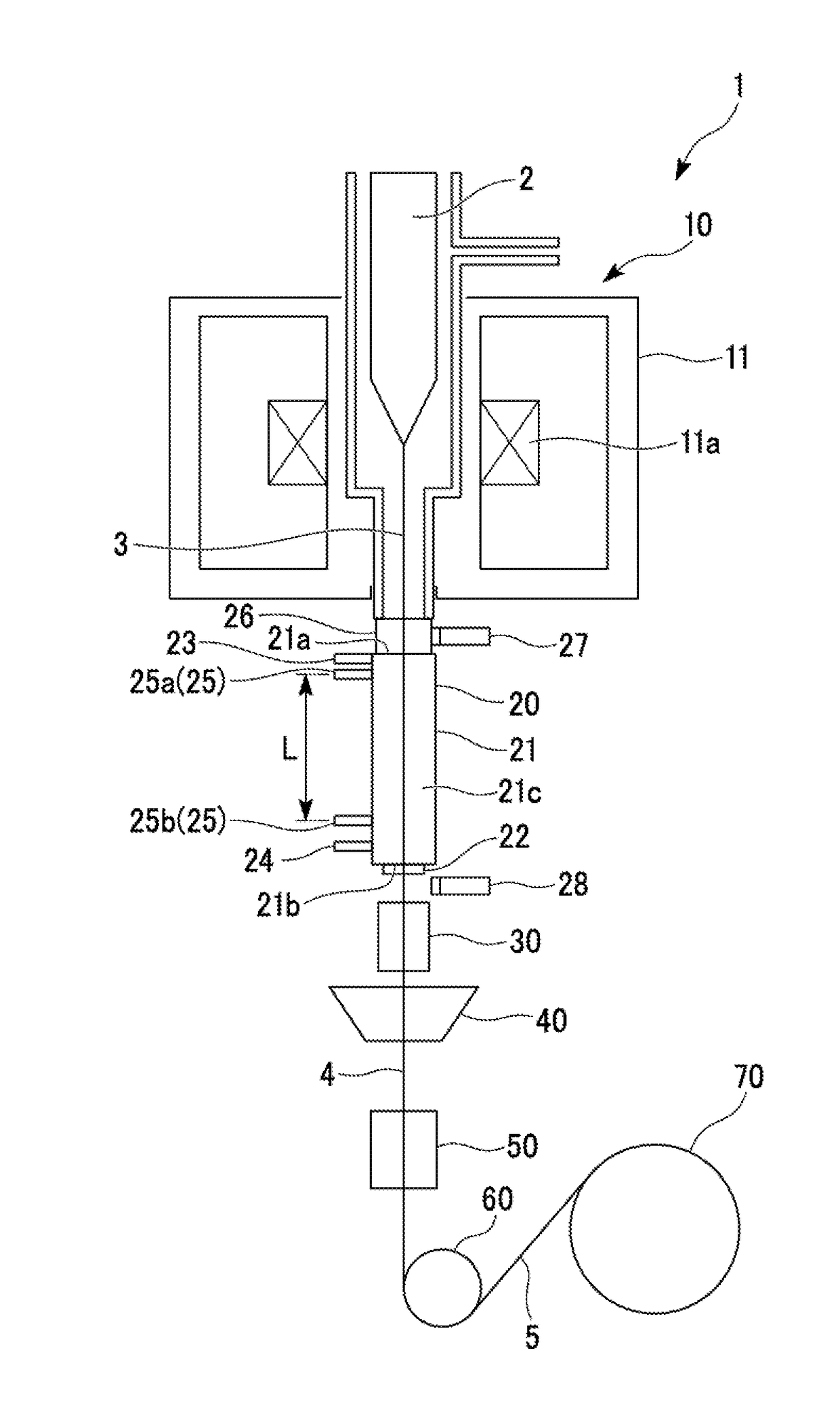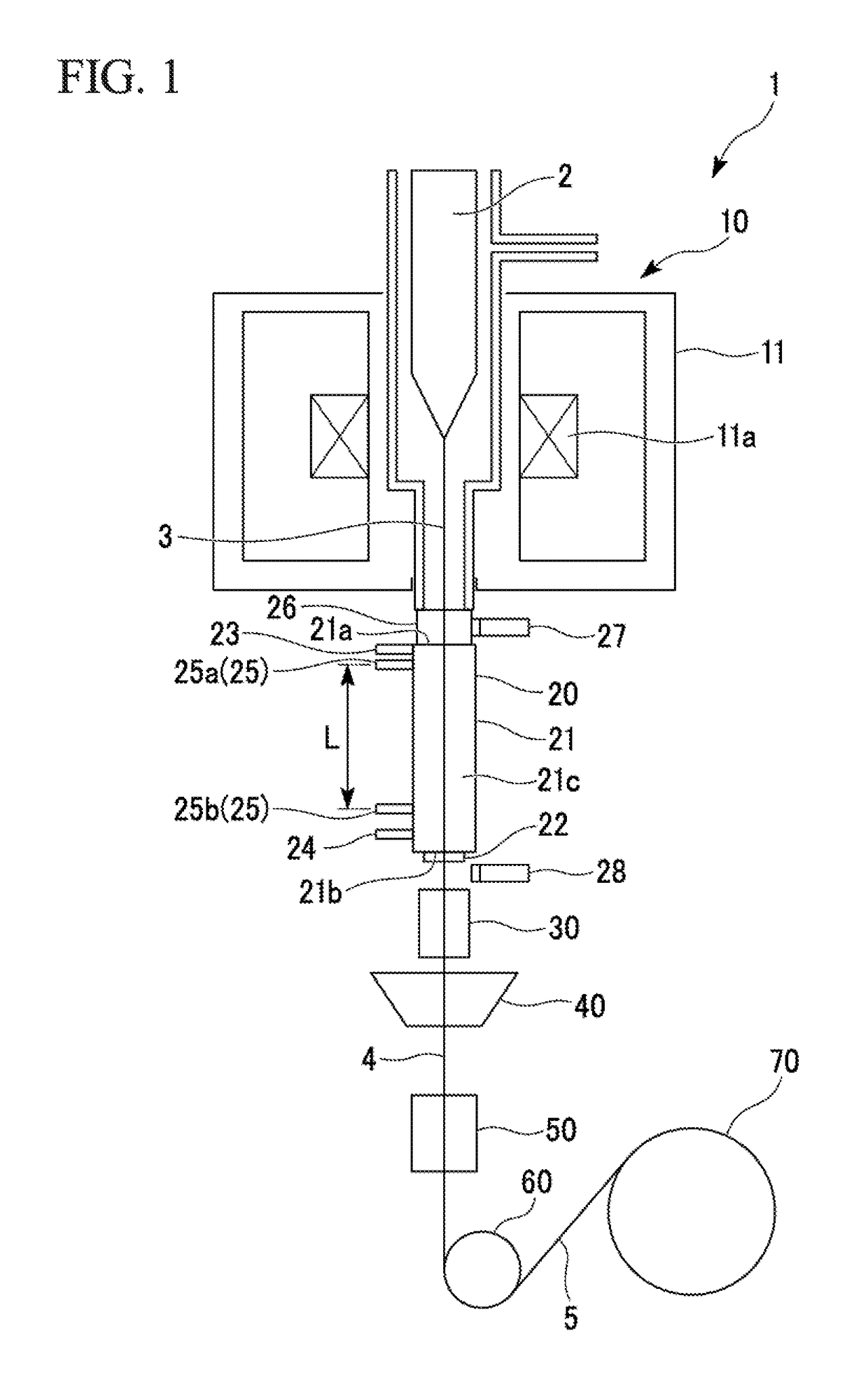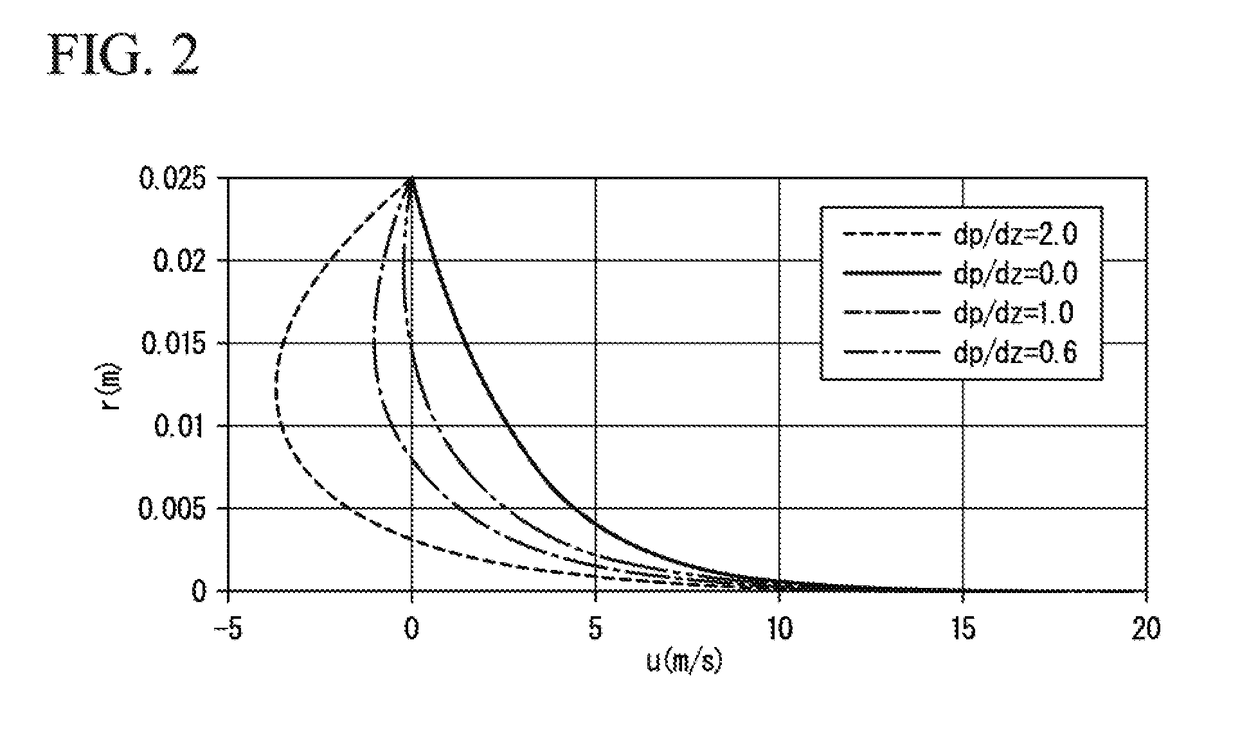Method of manufacturing optical fiber
a manufacturing method and optical fiber technology, applied in glass production, glass making apparatus, manufacturing tools, etc., can solve the problems of inability to achieve sufficient slow-cooling effect, inability to reduce productivity, increase power consumption, etc., and achieve low transmission loss, reduce heat transfer between fluid and inner wall of tube, and prevent complex apparatus configuration
- Summary
- Abstract
- Description
- Claims
- Application Information
AI Technical Summary
Benefits of technology
Problems solved by technology
Method used
Image
Examples
example 1
[0136]The optical fiber 5 was manufactured using the manufacturing apparatus shown in FIG. 1.
[0137]The total length of the slow-cooling device 20 was set to 3 m. The inner diameter of the main body 21 was set to 38.7 mm. The inside of the slow-cooling device 20 (the main body 21) was filled with Ar.
[0138]The fiber drawing velocity was set to 2,200 m / min. The temperature of the glass fiber 3 immediately before entering the slow-cooling device 20 was set to approximately 1,400° C. The inner wall temperature of the main body 21 of the slow-cooling device 20 was set to 1,000° C.
[0139]The flow rate of Ar introduced from the gas inlet / outlet portions 23 and 24 and the inner diameter of the opening of the constrictor 22 were adjusted so that a pressure change in the axial direction of the slow-cooling device 20 was approximately 4.5 Pa / m.
[0140]The result of the measurement by the radiation thermometer 28 was that the temperature of the glass fiber 3 at the outlet of the slow-cooling device...
example 2
[0142]The optical fiber 5 was manufactured using the manufacturing apparatus shown in FIG. 1.
[0143]The total length of the slow-cooling device 20 was set to 3 m. The inner diameter of the main body 21 of the slow-cooling device 20 was set to 20 mm. The inside of the slow-cooling device 20 (the main body 21) was filled with Ar.
[0144]The fiber drawing velocity was set to 2,200 m / min. The temperature of the glass fiber 3 immediately before entering the slow-cooling device 20 was set to approximately 1,400° C. The inner wall temperature of the main body 21 of the slow-cooling device 20 was set to 1,000° C.
[0145]The flow rate of Ar introduced from the gas inlet / outlet portions 23 and 24 and the inner diameter of the opening of the constrictor 22 were adjusted so that a pressure change in the axial direction of the slow-cooling device 20 was approximately 20 Pa / m. The other conditions were determined in accordance with Example 1.
[0146]The result of the measurement by the radiation thermom...
example 3
[0148]The optical fiber 5 was manufactured using the manufacturing apparatus shown in FIG. 1.
[0149]The total length of the slow-cooling device 20 was set to 3 m. The inner diameter of the main body 21 of the slow-cooling device 20 was set to 50 mm. The inside of the slow-cooling device 20 (the main body 21) was filled with Ar.
[0150]The fiber drawing velocity was set to 2,200 m / min. The temperature of the glass fiber 3 immediately before entering the slow-cooling device 20 was set to approximately 1,400° C. The inner wall temperature of the main body 21 of the slow-cooling device 20 was set to 1,000° C.
[0151]The flow rate of Ar introduced from the gas inlet / outlet portions 23 and 24 and the inner diameter of the opening of the constrictor 22 were adjusted so that a pressure change in the axial direction of the slow-cooling device 20 was approximately 2.5 Pa / m. The other conditions were determined in accordance with Example 1.
[0152]The result of the measurement by the radiation thermo...
PUM
| Property | Measurement | Unit |
|---|---|---|
| Reynolds number | aaaaa | aaaaa |
| inner diameter | aaaaa | aaaaa |
| velocity | aaaaa | aaaaa |
Abstract
Description
Claims
Application Information
 Login to View More
Login to View More - R&D
- Intellectual Property
- Life Sciences
- Materials
- Tech Scout
- Unparalleled Data Quality
- Higher Quality Content
- 60% Fewer Hallucinations
Browse by: Latest US Patents, China's latest patents, Technical Efficacy Thesaurus, Application Domain, Technology Topic, Popular Technical Reports.
© 2025 PatSnap. All rights reserved.Legal|Privacy policy|Modern Slavery Act Transparency Statement|Sitemap|About US| Contact US: help@patsnap.com



